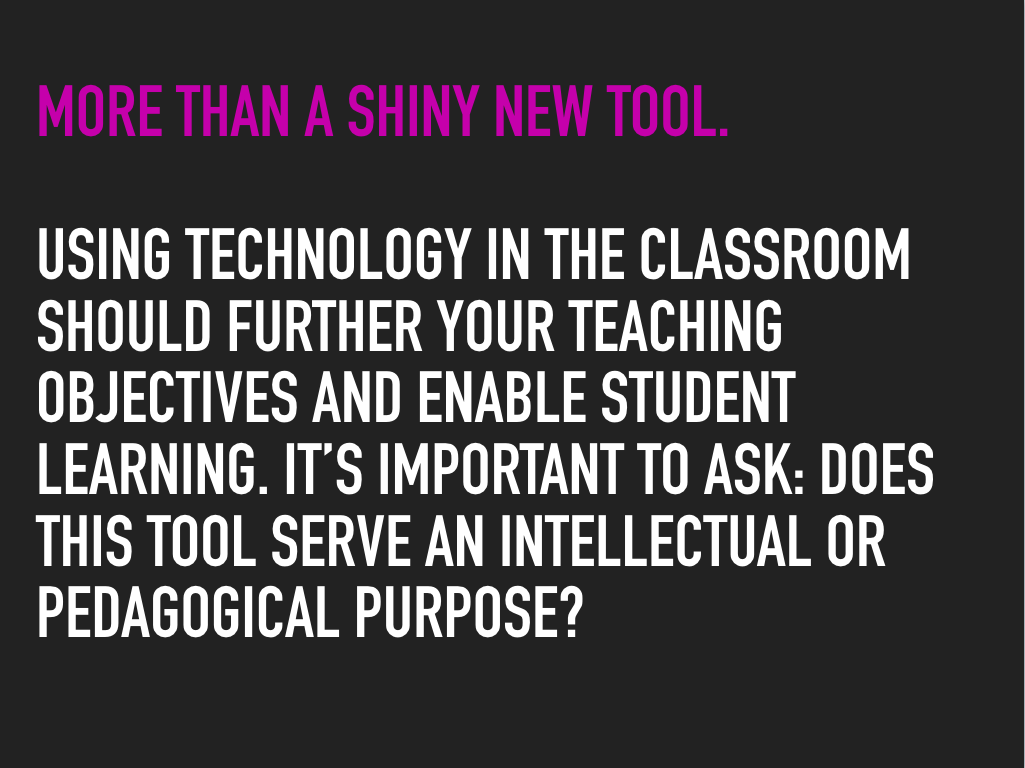I was invited to give a short presentation to a number of new graduate students today and because I frequently talk about the need to pair learning objectives with technology, I thought I’d share the slides here. I edited the presentation to minimize the local specificity – focusing, instead, on the central idea that using technology in the classroom should not be tool based. Instead of picking a tool, consider a methodology and think through what students will gain by using new technology.
Consider: asking students to use new digital tools invites them to engage directly with primary resources, to conduct the practice of research or curation, and to imagine writing for multiple audiences. (Podcasts, in particular, become scholarly products that students can share with friends, family, and home communities!) But, more, asking students to create with digital content forces them to think critically about where digital content comes from and how it is packaged. They likely interact with digital content every day and may not ever apply the same critical lens they bring to a book or an article. If you make digital content scholarly material and ask them to manipulate it or cite it, they may start to think differently.
A short anecdote: students in my Holocaust in the Digital Age class were building a website about Nazi Propaganda. They found a trove of visual materials on Pinterest, but could not find the origin of those materials and could not create citations for them. Because of this limitation, they could not use these images in their class project. They were frustrated, but started to question the nature of Pinterest and recognize the need for citations – even online.
Slides from the presentation below. Thinking about digital pedagogy continues.
Tools for Teaching_UCSC 2017